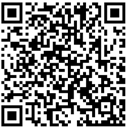
Copyright@ 2003-2025
進口試劑采購網版權所有
BIOLEAF熱搜 BIOLEAF試劑盒 BIOLEAF ELISA BIOLEAF試劑 BIOLEAF品牌 BIOLEAF抗體 BIOLEAF耗材 BIOLEAF小儀器
BIOLEAF熱搜 BIOLEAF試劑盒 BIOLEAF ELISA BIOLEAF試劑 BIOLEAF品牌 BIOLEAF抗體 BIOLEAF耗材 BIOLEAF小儀器